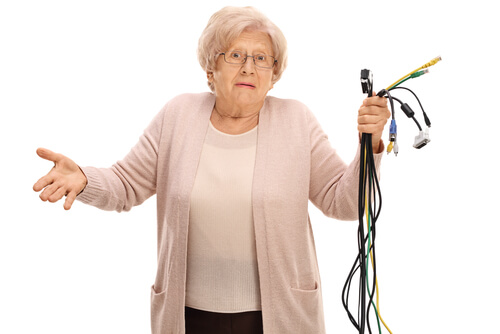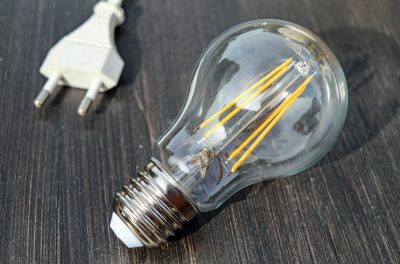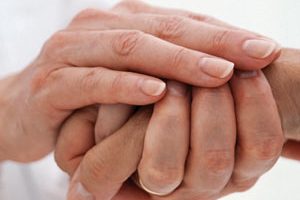
What Are the Top Emerging Tech Trends For Home Care in 2017?
Technology is in the midst of redefining, sometimes even reinventing, numerous industries. As a means of providing far greater efficiency and effectiveness in day-to-day operations, innovation is driving new ways of going about traditional functions and tasks, including the rapidly growing home care space. In fact, there are 10 tech trends emerging in home care that promise to continue the rapid growth in productivity and quality of care.
1. Wearable Technology for Vitals
Although wearable technology has long been used in exercise and athletic capacities, it is just now seeing greater adoption rates in home care. With the ability to track vitals in a manner that’s immediate, constant, and comfortable for the patient, wearable tech is proving to be extremely beneficial for monitoring heart rate, blood pressure, and other measurables. If any potential health issue might arise, the technology is often linked with mobile devices, immediately alerting the caregiver to the situation.
2. Wearable Technology for Increased Mobility
Similar wearable technology can also be used in combination with GPS and geofencing technologies to afford a patient more mobility while providing the caregiver constant information on the patient’s location. Alerts can be set up if the patient moves outside of a designated area to mitigate the risk of injury.
3. Artificial Intelligence
While it might sound like the backdrop for science fiction, AI has several applications in home care. For instance, it can be used in conjunction with wearables in a predictive capacity, able to recognize trends in vitals or movement that can lead to health or injury concerns. Such technology might be able to sense a heart attack before it occurs or even analyze patterns in patient behavior that are indicative of a potential episode.
4. Wireless Security
As an offshoot of basic home security systems, wireless monitoring devices can be installed throughout a home to provide a caregiver constant information on a patient’s well-being. These systems can sync with a mobile device, allowing the caregiver to continually monitor the patient as well as afford greater mobility for everyone involved.
5. Network Nodes for Better Communication
Once again, leveraging the power of a networked home, call tree nodes can be integrated into a security platform to notify designated people if particular events occur. If a wearable senses that someone has fallen, it can use the installed node to automatically send an SMS message to caregivers, family or anyone else that should be notified.
6. Remote Doctor Visits
While the underlying technology is not necessarily new, live streaming video chats are finally being utilized to a far greater extent in home care. Rather than taking unnecessary risks in transporting a patient to a medical appointment, streaming services can now remotely link the doctor and patient without having to travel to the doctor’s office, a service called Telehealth. This saves time and effort for the patient and caregiver while significantly reducing the risk from loading a patient into a car to see their doctor.
7. Medication Monitoring
Of course, one of the most consistent and pressing concerns in home care is the efficient and effective distribution of medication. While several companies use their own unique systems to accomplish the task, they all rely on Internet of Things technology, or IoT, to alert both the patient and caregiver if medication has been missed or taken at a wrong dose. These systems can also provide alerts for upcoming medication needs, including necessary refills.
8. Virtual Assistants
Utilizing similar technology to popular smart home systems, virtual assistant devices can be integrated into smart home technology to allow a patient to perform routine tasks with just the sound of their voice. By being able to turn lights on and off, control temperature controls of a home, or even listen to music or control streaming media services, virtual assistants can provide a patient with much greater ease while performing everyday tasks.
9. Bluetooth in Hearing Devices
While Bluetooth technology has been integrated into all sorts of devices, they have only recently begun to be used with hearing aids. A handful of companies now use Bluetooth within hearing aids to sync with mobile phones, televisions and even stereos. With helpful features such as volume control and the ability to change television channels through a companion app for smartphones and tablets, these hearing aids can significantly improve the quality of life for hearing-impaired patients.
10. Smart Medical Implants
Once again leveraging IoT technology, medical devices like pacemakers and glucose sensors can now also be synced with mobile platforms to provide real time data for the caregiver. By using the connectivity as a preventive measure, caregivers can now be alerted to medical issues that might be developing and cannot be measured by wearable technology.
Although technology will never be a cure-all for any industry, home care included, it can certainly streamline functions to make routine tasks like monitoring medication and mobility much easier for caregivers (including family caregivers). Of course, these same innovations can also make life easier, healthier and even more enjoyable for patients in home care. By adopting these technologies and the many others that are transforming home care, patients can receive better, more thorough care while saving expenses through increased efficiency and productivity.






